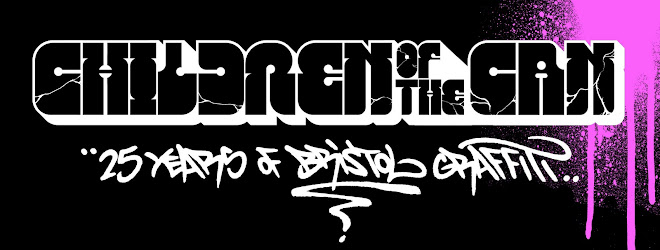
It was a warm July evening before they invented mobile phones, the Internet, or skunk, and Gallery 1 at the Arnolfini looked like the set of a New York cable TV hip hop show. The pieces on the walls were huge, train-scale, and painted in the mighty German 'art spray' Buntlack: all candy-pinks and oranges, and the deepest reds, electric blues and greens, the likes of which had rarely been seen in Bristol at the time. Enlargements of Henry Chalfant's New York subway graffiti photos hung in the foyer and the man himself was in town taking photos for his second book, Spraycan Art, and giving credence to whole event. In the far corner by the stairs the Wild Bunch were holding court, dropping seminal classics such as T La Rock's It's Yours, and Run DMC's Sucker MCs; whilst poppers, lockers and b-boys worked up a quick sweat in a large circle in the opposite corner, flanked by BSD's Wizard piece and the Z-Boys' comeback comment on the whole issue of 'selling out,' Traitor. Documentary filmmaker Dick Fontaine was also in the house, working on his Channel.4 documentary Bombin'. Something was definitely happening, it was real, large and as fresh as a pair of red Puma States with matching fat laces.


























